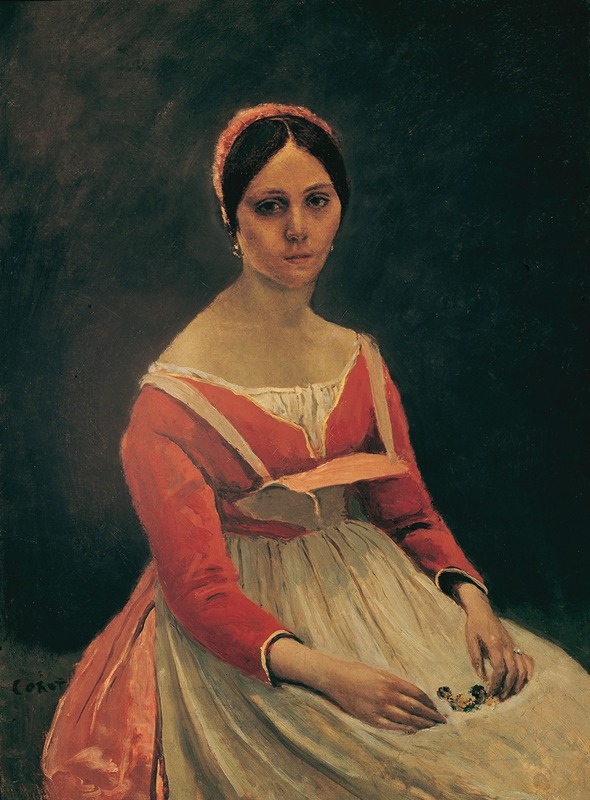
Madame Legois
A hand-painted replica of Jean-Baptiste-Camille Corot’s masterpiece Madame Legois, meticulously crafted by professional artists to capture the true essence of the original. Each piece is created with museum-quality canvas and rare mineral pigments, carefully painted by experienced artists with delicate brushstrokes and rich, layered colors to perfectly recreate the texture of the original artwork. Unlike machine-printed reproductions, this hand-painted version brings the painting to life, infused with the artist’s emotions and skill in every stroke. Whether for personal collection or home decoration, it instantly elevates the artistic atmosphere of any space.
Jean-Baptiste-Camille Corot, a prominent French landscape and portrait painter, created the artwork "Madame Legois." Corot, born on July 16, 1796, in Paris, is often associated with the Barbizon School and is considered a pivotal figure in landscape painting, bridging the gap between the Neo-Classical tradition and the plein-air innovations that would later influence the Impressionists.
"Madame Legois" is a portrait that exemplifies Corot's skill in capturing the essence and character of his subjects. While Corot is primarily celebrated for his landscapes, his portraits, such as this one, reveal his versatility and keen observational skills. The painting portrays Madame Legois, a woman whose identity beyond the title remains largely undocumented in historical records. This lack of detailed biographical information about the sitter is not uncommon in Corot's portraits, as many of his subjects were either personal acquaintances or models whose lives were not extensively chronicled.
In "Madame Legois," Corot employs a soft, almost ethereal palette, characteristic of his later works. The use of light and shadow in the painting is subtle yet effective, highlighting the delicate features of Madame Legois. Her attire and the background are rendered with a simplicity that draws attention to her face, emphasizing her serene expression and the contemplative mood of the portrait. This approach aligns with Corot's broader artistic philosophy, which often favored mood and atmosphere over intricate detail.
Corot's technique in this portrait, as in many of his works, involves a delicate balance between realism and idealization. He captures the individuality of Madame Legois while also imbuing the portrait with a timeless, almost universal quality. This duality is a hallmark of Corot's style, reflecting his ability to blend observation with a poetic sensibility.
The painting is also notable for its composition. Corot places Madame Legois slightly off-center, creating a dynamic yet harmonious balance within the frame. The background, though understated, provides a sense of depth and context without detracting from the subject. This compositional choice enhances the viewer's focus on Madame Legois, allowing her presence to dominate the canvas.
"Madame Legois" is part of Corot's broader body of work that includes numerous portraits, landscapes, and genre scenes. His portraits, though fewer in number compared to his landscapes, are highly regarded for their introspective quality and technical mastery. Corot's influence on subsequent generations of artists, particularly the Impressionists, is well-documented, and his works continue to be celebrated for their contribution to the development of modern art.
Today, "Madame Legois" is held in high esteem within the art community, appreciated for its subtle beauty and the insight it provides into Corot's artistic range. The painting is housed in a collection that ensures its preservation and accessibility to the public, allowing art enthusiasts and scholars alike to study and admire Corot's craftsmanship.
In summary, "Madame Legois" by Jean-Baptiste-Camille Corot is a testament to the artist's ability to capture the human spirit with sensitivity and grace. Through his masterful use of light, composition, and subtle detail, Corot creates a portrait that is both personal and universal, reflecting his enduring legacy in the world of art.


















